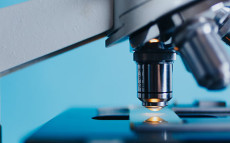- pathfindersAI
- Job Profile
Biostatisticians
Summary
Biostatisticians: A Career Path in Numbers and Health
What They Do
Biostatisticians are experts who apply statistical methods to biological, medical, and public health research. Their primary role involves analyzing data to draw meaningful conclusions that can improve health outcomes and advance scientific knowledge. These professionals play a crucial role in designing clinical trials, conducting epidemiological studies, and contributing to genomics research. By converting complex biological data into actionable insights, biostatisticians help shape public health policies, medical guidelines, and innovative healthcare solutions.
Job Responsibilities
The responsibilities of biostatisticians are diverse and impactful. At their core, these professionals are responsible for planning and conducting experiments, surveys, and clinical trials. They develop statistical models to test hypotheses and assess the efficacy and safety of new treatments. Biostatisticians collaborate with researchers to design studies, ensuring that they are statistically sound and ethically conducted. Data analysis is another critical component of their job, requiring them to interpret results, prepare reports, and present findings to stakeholders. By ensuring the accuracy and reliability of data, biostatisticians contribute to evidence-based decision-making in healthcare.
Essential Skills
To excel in this profession, biostatisticians must possess a blend of technical and interpersonal skills. A strong foundation in mathematics and statistics is paramount, along with proficiency in statistical software such as R, SAS, and STATA. Analytical thinking and problem-solving abilities are crucial for interpreting complex data sets and developing innovative solutions. Attention to detail is essential, as biostatisticians must ensure data integrity and accuracy in their analyses. Communication skills are also vital, as they often need to explain statistical concepts to non-specialists and collaborate with multidisciplinary teams. Additionally, a solid understanding of biological and medical sciences enhances their ability to apply statistical methods to real-world problems.
Educational Pathways
Embarking on a career as a biostatistician typically requires a robust educational background. A bachelor's degree in statistics, mathematics, or a related field provides a strong foundation for this career. However, most biostatisticians pursue advanced degrees to specialize and enhance their expertise. A master's degree in biostatistics or a related discipline is often required, and many professionals opt for a Ph.D. to access higher-level research positions and academic roles. Coursework in statistical theory, experimental design, and bioinformatics, combined with practical experience through internships or research projects, equips aspiring biostatisticians with the knowledge and skills needed for success.
Career Prospects
The demand for biostatisticians is growing rapidly, fueled by advancements in biomedical research, public health, and personalized medicine. As healthcare becomes increasingly data-driven, the need for skilled professionals who can analyze and interpret complex data sets is more pressing than ever. Biostatisticians can find opportunities in various settings, including academic institutions, government agencies, pharmaceutical companies, and healthcare organizations. The Bureau of Labor Statistics projects a faster-than-average growth rate for this profession, highlighting its promising career prospects. Furthermore, the diverse applications of biostatistics allow professionals to work on a wide array of projects, from cancer research to infectious disease modeling.
Conclusion
In conclusion, biostatisticians play an indispensable role in advancing healthcare and scientific research through their expertise in statistical analysis. With responsibilities that range from designing studies to interpreting data, these professionals contribute to significant medical breakthroughs and public health improvements. Essential skills such as mathematical proficiency, analytical thinking, and effective communication are crucial for success in this field. Pursuing a career as a biostatistician typically involves advanced education and specialized training, but the promising career prospects and impactful work make it a rewarding path. For those passionate about numbers and health, becoming a biostatistician offers a unique opportunity to make a tangible difference in the world.
Video
Compensation
| State | Median Salary | Median Hourly | Positions |
|---|---|---|---|
| AL | 71,160 | 34.21 | 210 |
| AK | 94,930 | 45.64 | 50 |
| AZ | 82,550 | 39.69 | 450 |
| CA | 125,860 | 60.51 | 2,800 |
| CO | 96,160 | 46.23 | 1,140 |
| CT | 109,700 | 52.74 | 310 |
| DE | 106,000 | 50.96 | 120 |
| DC | 128,640 | 61.85 | 670 |
| FL | 82,060 | 39.45 | 510 |
| GA | 107,480 | 51.68 | 490 |
| HI | 68,540 | 32.95 | 100 |
| ID | 91,440 | 43.96 | 40 |
| IL | 114,180 | 54.89 | 460 |
| IN | 102,150 | 49.11 | 230 |
| IA | 83,890 | 40.33 | 280 |
| KS | 99,820 | 47.99 | 90 |
| KY | 95,940 | 46.13 | 100 |
| LA | 69,100 | 33.22 | 80 |
| ME | 81,060 | 38.97 | 30 |
| MD | 123,200 | 59.23 | 3,020 |
| MA | 84,820 | 40.78 | 2,130 |
| MI | 106,390 | 51.15 | 640 |
| MN | 88,750 | 42.67 | 600 |
| MS | 52,390 | 25.19 | 70 |
| MO | 59,620 | 28.66 | 530 |
| MT | 81,550 | 39.21 | 40 |
| NE | 82,300 | 39.57 | 150 |
| NV | 65,880 | 31.67 | 70 |
| NH | 107,320 | 51.59 | 50 |
| NJ | 119,250 | 57.33 | 430 |
| NM | 50,620 | 24.34 | 240 |
| NY | 118,950 | 57.19 | 1,110 |
| NC | 109,950 | 52.86 | 1,790 |
| ND | 73,030 | 35.11 | 50 |
| OH | 88,170 | 42.39 | 350 |
| OR | 87,920 | 42.27 | 600 |
| PA | 83,560 | 40.17 | 2,350 |
| RI | 88,970 | 42.77 | 40 |
| SC | 71,760 | 34.50 | 230 |
| TN | 80,850 | 38.87 | 920 |
| TX | 95,600 | 45.96 | 1,220 |
| UT | 85,810 | 41.26 | 300 |
| VT | 69,830 | 33.57 | 120 |
| VA | 104,060 | 50.03 | 1,090 |
| WA | 112,520 | 54.10 | 2,820 |
| WV | 69,360 | 33.35 | 80 |
| WI | 80,470 | 38.69 | 230 |
| WY | 82,780 | 39.80 | 40 |
Similar Occupations
In this area you will find other occupations that are close to the one you were viewing in tasks, knowledge and work environment. If the primary job profile you are viewing isn't quite to your liking, take a look around and see what else is available.
Basic and Premium Accounts have more alternative occupations available than the Free account.

Bioinformatics Scientists - 19-1029.01
A Bioinformatics Scientist utilizes computational and statistical techniques to analyze and interpret complex biological data, often related to genomics, proteomics, and other large-scale molecular datasets. They develop algorithms, software tools, and databases to identify patterns and make data-driven predictions that advance understanding in fields such as genetic research, drug discovery, and disease diagnosis.
-
$91,100/yr
Median Pay -
61,220
Number of Jobs

Bioinformatics Technicians - 15-2099.01
A Bioinformatics Technician applies computational tools and techniques to analyze biological data, such as genetic codes and protein sequences, to support scientific research and development. They manage databases, interpret complex datasets, and create visualizations to assist biologists in understanding molecular and genetic information.
-
$70,620/yr
Median Pay -
4,320
Number of Jobs